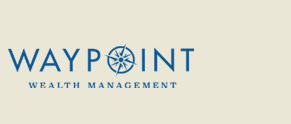How Can “Sequence of Return” Help or Harm You?
Clearly, there is a lot to think about when planning for retirement. While we have a degree of control over many of the choices involved, there’s one big wild card called sequence risk.
Sequence risk is the risk that you’ll encounter negative investment returns in early retirement. This is an important consideration, because the random sequence – or order – in which you earn your returns early in retirement can have a significant impact on your lasting wealth. Simply put, a retirement portfolio that happens to experience positive returns early in retirement has a better chance to outlast an identical portfolio that must endure negative returns early in retirement (if withdrawal amounts are not adjusted) … even if their long-term rates of return end up the same.
Since nobody can predict which return sequence they’ll experience early in their retirement, every family should prepare for a range of possibilities with their retirement planning.
The Significance of Sequence Risk
It’s no secret that global stock markets are volatile. While long-term average annual returns may be in the range of 7% or so, markets rarely deliver this exact average any given year. Unfortunately, no one knows for sure how far above or below average each year will be.
During your career, you’re mostly spending earned income, while adding to your retirement reserves as aggressively as your plans call for. As long as you stay the course – benefiting from the upswings and enduring the downturns – tolerating market volatility is just part of the plan.
In fact, when you’re still accumulating wealth, market downturns give you the opportunity to buy more shares than you otherwise could when prices are higher. When the market recovers, you then have more shares to recover with, which ultimately strengthens your portfolio.
Then you stop working and start spending from your retirement reserves. This has the opposite effect. Now, when stock markets decline, you may need to sell shares at low prices, which means you’ll have to sell more of them to withdraw the same amount of cash. Even though the market is expected to eventually recover and continue upward, your portfolio will have fewer shares with which to participate in the recovery. This hurts your portfolio’s staying power. It won’t be able to bounce back as readily as when you were adding shares to it, or at least not taking them away.
Managing the Sequence Risk Wild Card
Sequence risk should NOT change your overall approach to investing. As 2020 has clearly shown us, you never know what’s going to happen next. Crashes usually occur without warning, while some of the strongest rebounds arrive amidst the darkest days.
So, whether you’re 20, 40, 60, or 102, we still recommend building and maintaining a low-cost, globally diversified portfolio that reflects your personal goals and risk tolerances. We still advise against trying to pick individual stocks or react to current market conditions. We still suggest you only change your portfolio’s asset allocations if your personal goals have changed – never in raw reaction to changeable market moods.
What can you do to mitigate sequence risk if it happens to you?
Diversify across various asset classes that move differently. The best example of this is owning bonds, but the example can pertain to asset classes within stocks as well. Either way, having shares of the portfolio that you can sell pieces of when needed that are not down (and in some cases, might actually be up) for income can mitigate this risk over time.
Manage spending and goals. I think this is the most important step. Understanding ahead of time what your range of outcomes are, and best case/worse case scenarios can help you to prioritize your goals and to be prepared for most scenarios that come our way.
Tap other assets. When you retire, you typically have several sources of income to draw from. You may have traditional investment accounts, retirement accounts, Social Security, or pension plans. Your investments are usually divided between stocks and bonds. You may have equity in your home. You may have cash reserves. If you encounter stock market sequence risk early in retirement, you might be able to tap a combination of your non-stock assets for initial spending needs. This can mitigate the hit your portfolio will otherwise have to take if you must liquidate shares of stock.
Keep working. If you are willing and able, you might postpone retirement, or even return to the workforce. Even part-time employment can help offset an ill-timed sequence of negative market returns. If your circumstances allow, you may be able to not only avoid spending retirement reserves during down markets but even add more in (buying at bargain prices).
Consult with a professional. Sequence risk is usually not the only consideration at play in retirement planning. There are taxes to consider, estate plans to bear in mind, carefully structured investment portfolios to maintain, and expectations to manage. All this speaks to the value an experienced advisor can add before, during, and after this pivotal time in your financial journey. While no investment plan is perfect, having someone you trust who is by your side can help you have confidence so that you can enjoy your life and worry about money less.
As we frequently remind clients, diversification, and investing, in general, are not guaranteed. Please consult with a professional regarding your own personal investing situation.

Posted by:











